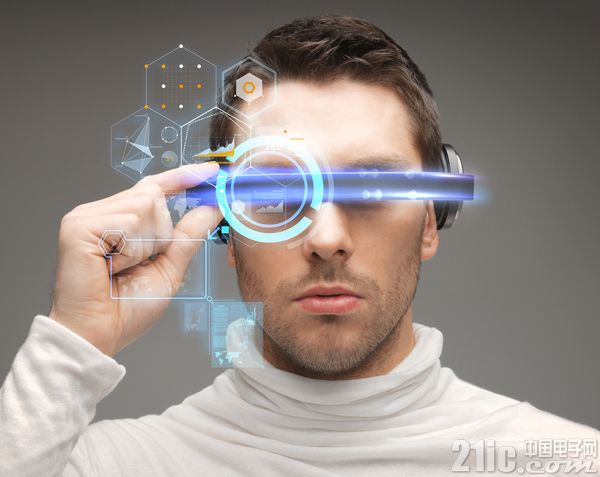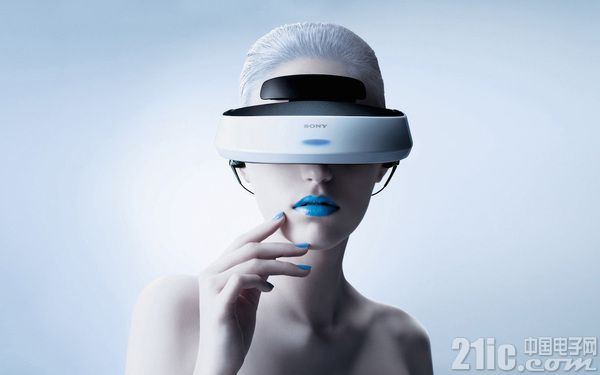
This article refers to the address: http://
The core technologies of the current virtual reality system include: force feedback technology, motion capture technology, and 3D stereo technology related to the interactive experience, totaling 15 items.
If you are interested in virtual reality systems and want to understand and learn the core technologies related to virtual reality, this article is worthy of your collection.

Computer Graphics
Computer graphics mainly studies how to represent graphics in a computer and the principles and algorithms for computing, processing, and displaying graphics using a computer.
Processing technology, graphics are mainly divided into two categories:
One type is a graph composed of lines, such as engineering drawings, contour maps, wireframes of curved surfaces, etc.
The other type is a shading similar to a photo, also known as a realistic image.
Simulation Technology
Based on cybernetics, systems theory, similarity principles and information technology, computer and special equipment are used as tools to make dynamic experiments on actual or envisioned systems using system models.
Such as: driving training simulator for cars or airplanes, that is, application simulation technology.
3D virtual sound implementation technology
The three-dimensional virtual sound in the virtual scene enables the user to accurately determine the precise position of the sound source, in line with people's sense of hearing in the real world.
The value of virtual surround sound technology is that it uses two speakers to simulate the effect of surround sound, but it cannot be compared with a real home theater. In addition, this technology generally requires higher listening position.
Collision detection technology
In the virtual world, due to the interaction between the user and the virtual world and the mutual movement of objects in the virtual world, there is often a situation in which objects collide.
Therefore, collision detection is often used to detect whether two objects interact to ensure the authenticity of the virtual world and update the scene output in time, otherwise penetration will occur.
Due to the high real-time requirements in the virtual reality system, collision detection must be completed in a short time (such as 30 ~ 50ms), so collision detection becomes the bottleneck of virtual reality system and other real-time simulation systems. Collision detection is virtual. An important technology for real system research.
3D modeling technology
Three-dimensional modeling is generally mainly three-dimensional visual modeling. 3D vision modeling can be divided into geometric modeling, physical modeling, and behavior modeling.
Commonly available are Autodesk's 3DMAX, MAYA, and CATIA and SolidWorks from the Dassault Group of France, PTC's Pro/Engineer, and Siemens' UG (Unigraphics NX).
Three-dimensional display technology
3D display technology is more hardware-related, such as stereoscopic projection equipment, stereoscopic display, VR helmet, VR glasses and so on.
Force feedback technique
Technology related to the interactive experience.
Force feedback is mainly through the simulation of various tactile motors and sensors.
Primary feedback such as gamepad vibration feedback, advanced equipment such as equipment for physical rehabilitation training, industrial-level force feedback equipment for assembly and maintenance simulation, and even force feedback equipment for telemedicine and medical research.
Motion capture technology
This is a technology related to the interactive experience.
The motion technology involves the direct measurement of the processed data by the computer in terms of dimensional measurement, positioning of objects in the physical space, and orientation measurement. A tracker is set at a key part of the moving object, and the position of the tracker is captured by the Motion capture system, and then processed by the computer to obtain data of the three-dimensional space coordinates.
Commonly used motion capture technologies can be divided into mechanical, acoustic, electromagnetic, active optical and passive optical.
Environmental modeling technology
That is to say, the establishment of the virtual environment aims to acquire the three-dimensional data of the actual three-dimensional environment, and according to the needs of the application, the corresponding virtual environment model is established by using the acquired three-dimensional data.
Stereo synthesis and stereo display technology
The technology eliminates the correlation between the direction of the sound and the movement of the user's head in the virtual reality system, while generating stereoscopic graphics in real time in complex scenes.
Stereoscopic display is one of the key technologies of virtual reality. It makes people more immersive in the virtual world. The introduction of stereoscopic display can make the simulation of various simulators more realistic.
At present, stereoscopic display technology mainly uses stereoscopic glasses and other auxiliary tools to view stereoscopic images. With the continuous improvement of people's requirements for viewing, the technology from non-naked eye to naked eye has become a development focus and trend.
Some representative technologies are: color separation technology, spectroscopic technology, time-sharing technology, grating technology, holographic display technology.
Interactive technology
In the virtual space provided by the computer system, people can directly interact with each other using various feelings such as eyes, ears, skin, gestures and voice. This is the human-machine natural interaction technology in the virtual environment.
The most commonly used interactive technologies in the field of virtual reality include gesture recognition, facial expression recognition, eye tracking, and speech recognition.
System integration technology
Since the virtual reality system includes a large amount of perceptual information and models, the integration technology of the system is the most important: including information synchronization technology, model calibration technology, data conversion technology, recognition and synthesis technology, and so on.
Dynamic environment modeling technology
The establishment of virtual environment is the core content of virtual reality technology.
The purpose of the dynamic environment modeling technology is to obtain the three-dimensional data of the actual environment, and use the acquired three-dimensional data to establish a corresponding virtual environment model according to the needs of the application.
3D data can be acquired using CAD technology (regular environment), while more environments require non-contact visual modeling technology. The organic combination of the two can effectively improve the efficiency of data acquisition.
Real-time 3D graphics generation technology
3D graphics generation technology is relatively mature, but when to achieve real-time is the key.
In order to achieve real-time purposes, at least the graphics refresh rate should be at least 15 æ¡¢ / sec, preferably above 30 æ¡¢ / sec.
How to improve the refresh frequency is the research content of this technology without reducing the quality and complexity of the graphics.
Stereo display and sensor technology
The interactive capabilities of virtual reality depend on the development of stereoscopic display and sensor technology.
The existing virtual reality is far from meeting the needs of the system. For example, data gloves have disadvantages such as large delay, low resolution, small scope of action, and inconvenient use; the tracking accuracy and tracking range of virtual reality devices also need to be improved, so It is necessary to develop new 3D display technology.
Realistic real-time rendering technology
The creation of a virtual world requires not only a real sense of reality, but also a virtual world that must be generated in real time, which requires real-time rendering techniques.
Real-time real-time rendering is a technique that completes realistic rendering in a certain period of time under the constraints of current graphics algorithms and hardware conditions.
The meaning of “reality†includes geometric reality, behavioral realism and realism of illumination.
The meaning of "real time" includes real-time calculation and dynamic rendering of the position and posture of the moving object. The image update reaches the degree that the human eye does not observe the flicker, and the system can immediately respond to the user's input and generate corresponding scenes and events. Synchronize.
It is required that when the user's viewpoint changes, the graphic display speed must also keep up with the change speed of the viewpoint, otherwise hysteresis will occur.
Mini Solar Inverter,Solar Inverter System,Off Grid Solar Inverter,On Grid And Off Grid Inverter
Jinan Xinyuhua Energy Technology Co.,Ltd , https://www.xyhenergy.com
